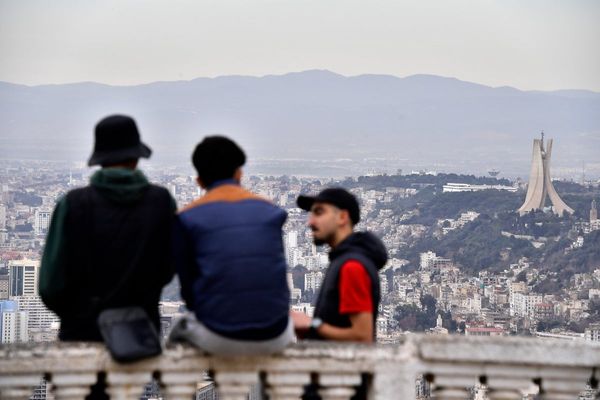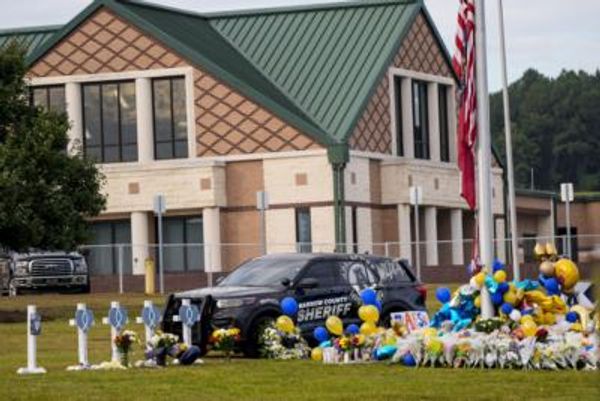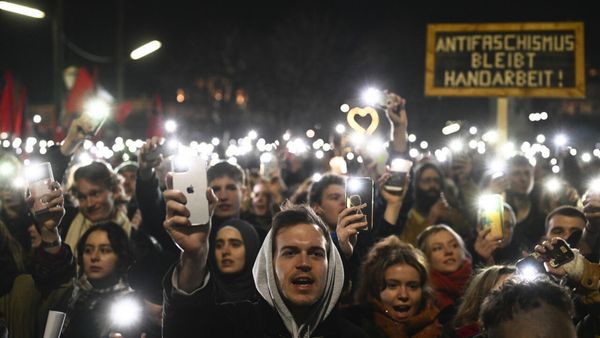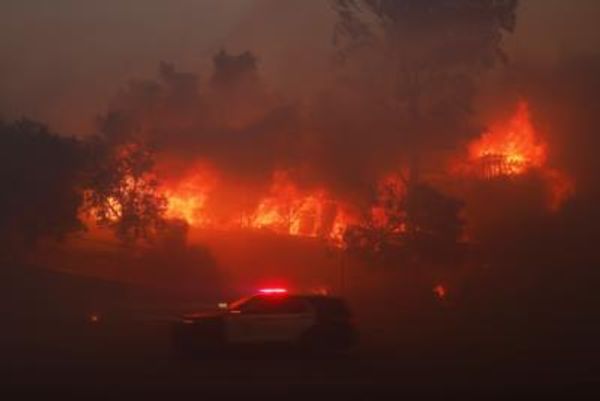
As Joe Biden prepares for his first presidential visit to Israel in late June, his administration has made clear that it doesn’t want to see any more Israeli settlement builds or demolitions of Palestinian homes in the West Bank.
But weeks before Biden’s plane touches down, the conclusion of a two-decade-long court case that pitted more than 1,000 Palestinian villagers against the Israel Defense Forces has resulted in some evictions and the threat of many more, potentially on a scale the region hasn’t seen in decades. It’s throwing a wrench into US-Israel diplomacy, as Congress and the State Department have both weighed in on Israel’s actions.
So what is Masafer Yatta, the West Bank area that has so many activists, Jewish groups and politicians so worried?
What is Masafer Yatta and why am I hearing about it?
Masafer Yatta is a collection of a dozen rural Palestinian villages spanning thousands of acres in the South Hebron Hills, which is in Area C of the West Bank. In the 1980s, at the suggestion of then-agriculture minister (later prime minister) Ariel Sharon, the IDF asserted that they had the right to use part of the land as a firearms training ground, or Firing Zone, and signaled their intent to evict the Palestinians who lived in eight of the 12 villages.
The military argued that the villagers, mostly shepherds and farmers, had not established permanent residency in what they call Firing Zone 918 because the villagers lived a nomadic lifestyle, wandering the hills with their livestock and only settling in the villages seasonally. Many of the homes in the region are in natural caves, rather than standalone construction.

The villagers took the matter to Israeli court in 2000, arguing that their claim to the land pre-dated the IDF’s. In court, they presented as evidence a 1981 written recommendation from Sharon that stated the army should declare the area a firing zone in order to curb “the spread of the rural Arabs of the mountain down the side of the mountain facing the desert … and to keep these areas in our hands.”
In return, the IDF presented aerial photographs of the region from the 1980s that don’t appear to show any freestanding structures that would indicate a permanent Palestinian presence. The military also submitted as evidence a four-decade-old ethnographic study by Israeli anthropologist Yaakov Havakook finding that there were no “permanent dwellings” in the region (Havakook has since said that the military misinterpreted his work).
The resulting legal battle was drawn out for more than two decades, finally culminating May 4 in an unanimous decision from Israel’s Supreme Court that the military does have the right to the land. As a result of the ruling, the IDF now has the legal authority to displace the more than 1,000 Palestinians who live in the eight villages within the Firing Zone.
“The Supreme Court fully accepted the State Of Israel’s position, and ruled that the petitioners were not permanent residents of the area.”
IDF statement
The military offered to allow the Palestinians to return to the land on weekends and Jewish holidays when it was not conducting exercises, a proposal the Palestinians rejected.
“The Supreme Court fully accepted the State Of Israel’s position, and ruled that the petitioners were not permanent residents of the area,” the IDF said in a statement to the media. “The court also noted that the petitioners rejected any attempted compromise offered to them.”
What has happened since the court ruling?
The military has already begun carrying out some demolitions and evictions in the region following the court’s decision granting them the legal authority to do so. The IDF demolished around 20 structures across three villages in a day, according to media reports.
Activists warn that the case also sets a precedent for the IDF to later evict the other four villages in Masafer Yatta, should they so choose, a move that would affect another several hundred Palestinians. They also worry about the impact such a mass eviction would have on already-strained West Bank infrastructure, and say it could further embolden Israeli settlers to push outposts deeper into Palestinian territory.
“The ruling was devastating, and I think is about as bad as could have been possible,” Maya Rosen, a Jewish anti-occupation activist who organizes with the Israeli collective All That’s Left, told the Jewish Telegraphic Agency.
Rabbi Jill Jacobs, president of the US-based rabbinic human rights group T’ruah, told JTA that the demolition and removal projects are “in violation of any human rights law, and it also honestly defies logic because it doesn’t help Israel, it doesn’t help Jews. All it’s doing is destroying people’s lives.”
If all the evictions were to be carried out, activists say it would constitute the largest single mass displacement of Palestinians by Israelis since the 1967 war that resulted in the West Bank occupation. But the IDF has not yet indicated whether it intends to displace everyone.
What does the Biden administration think of this?
The Biden administration has made clear in its public statements that it discourages further Israeli action in the West Bank, including both new settlement construction and mass demolitions of Palestinian homes.
When recently asked about Masafer Yatta, State Department spokesman Ned Price said that the administration was “watching this case very closely,” adding, “We believe it is critical for all sides to refrain from steps that exacerbate tensions and that undercut efforts to advance a negotiated two-state solution. This certainly includes evictions.”
Congress is getting involved, too. On Thursday, a coalition of 20 Senate and 63 House Democrats submitted a letter to Secretary of State Antony Blinken urging the Biden administration to “engage with the Israeli government to prevent these evictions and seek a solution that will keep people in their homes and prevent further conflict.” J Street, the left-leaning Israel advocacy group, also supported the letter, which was authored by Oregon Sen. Jeff Merkley and New Mexico Rep. Melanie Stansbury.
Some centrist pro-Israel Democrats are notably among the letter’s signatories, including Sen. Amy Klobuchar of Minnesota and Reps. Seth Moulton and Jake Auchincloss of Massachusetts.
In addition to the Masafer Yatta evictions, the State Department said it “strongly opposes” Israeli Prime Minister Naftali Bennett’s administration’s recent approval of more than 4,000 new Israeli settlements in the West Bank, although thus far the United States has been reluctant to take any concrete effort to deter such developments.
Biden has hopes that a bipartisan US relationship with Bennett will be easier to maintain than that of his predecessor, hardliner Benjamin Netanyahu, despite new signs that Bennett’s uneasy coalition in the Knesset may be fracturing. But a number of progressive Democrats are increasingly emboldened to go after Israel in the wake of last year’s deadly conflict with Hamas, as a months-long Congressional fight over Iron Dome funding demonstrated.
There have also been reports that Biden’s first visit to Israel might include a stop at a Palestinian hospital in East Jerusalem. That, along with the president’s verbal (but still unfulfilled) promise to reopen a consulate for Palestinians in Jerusalem, points to Biden’s intent to forge warmer relations with both Israelis and Palestinians, and to the likelihood that settlements and evictions will be a topic of conversation between him and Bennett.
Both the United Nations and the European Union have also directly criticized the Masafer Yatta demolitions, saying they are illegal under international law and urging Israel to not go forward with more.
How does this relate to Sheikh Jarrah, the last Palestinian neighborhood I heard about?
Last summer, Israeli authorities threatened to evict 13 Palestinian families from Sheikh Jarrah, a small neighborhood in East Jerusalem. Violent clashes erupted between Palestinian protesters and Israeli police and border enforcement, leading to international outrage, from politicians to rabbis to celebrities. Hamas used the dispute as a pretext to fire rockets into Israel, leading to last year’s violent conflict, in which Israeli forces killed hundreds of Palestinians and Hamas killed more than a dozen Israelis.
The two cases are similar in some ways — both have inflamed already existing tensions on the ground and galvanized global public opinion.
But the heart of Sheikh Jarrah was a dispute over private ownership of land between longtime Palestinian residents and Israeli settlers. The Masafer Yatta dispute, by contrast, gets at which lands the military is allowed to assert control over — though this is a distinction without a difference to many anti-occupation activists, who say the end result in both cases (removal of Palestinians from their homes) is the same.
Eventually, Israel backed off from its Sheikh Jarrah eviction plan; the case went instead to the Supreme Court, which ruled earlier this year that four Palestinian families could stay in their homes without threat of eviction while the Israeli government settled their ownership claims. Still, clashes between Israelis and Palestinians in and around Sheikh Jarrah have continued throughout the past year.
Israeli authorities classified Sheikh Jarrah as a “real estate dispute” because the Jewish settlers seeking to evict them had filed legal claims of historic ownership to the area. There is also a difference in legal status: Sheikh Jarrah is in a territory Israel has effectively annexed without international approval, while Masafer Yatta is part of the West Bank’s Area C, which grants Israel control over the region pending a final status outcome, under the Oslo Accords.
Despite the differences, activists opposing the Masafer Yatta demolitions have taken inspiration from the fight over Sheikh Jarrah. Jewish anti-occupation groups helped launch the Save Masafer Yatta Campaign online and with flyers in 2020, a move representatives said was inspired by how activists elevated Sheikh Jarrah to an international issue.
Rosen said the campaign also takes inspiration from other Palestinian villages that saw their demolition cases widely publicized, like Khirbet Susya and Khan al-Ahmar.
Sheikh Jarrah led to a military conflict. Could this?
It’s hard to say, but tensions between Israelis and Palestinians are definitely rising once again. The Masafer Yatta ruling came shortly after clashes broke out between religious Israelis and Palestinians at Jerusalem’s Temple Mount, which Muslims refer to as Haram al Sharif (of which the al-Aqsa mosque is a part), during Ramadan last month.
It also came after Israel announced tighter restrictions on foreigners visiting the West Bank (implementation of them is currently delayed by the courts) and a day before the announcement of additional settlement constructions.
Palestinian terrorists have also attacked Israelis in recent weeks. An attack on the West Bank settlement of Ariel killed one Israeli guard, and officials killed a Palestinian in response; Israeli forces also shot dead another Palestinian in the West Bank village of Azzun. Additionally, two Palestinians killed three Israelis and wounded several others with an ax in the central Israeli city of Elad on Israel’s Independence Day, shortly after the Masafer Yatta decision came down; Israeli authorities arrested them after a three-day manhunt.
All of that came before the shooting death of a longtime Palestinian-American journalist who was covering an Israeli raid in the West Bank. Witnesses, some international press and the Palestinian Authority said Al Jazeera journalist Shereen Abu Akleh was likely killed by Israeli gunfire. Israeli authorities have said a deeper investigation is needed to determine who shot her, and they are blaming the PA for withholding evidence and refusing to cooperate on a joint investigation.
Abu Akleh’s death prompted international outrage, including from press freedom advocates and the US government.
So Masafer Yatta by itself may not prompt large-scale violence, but together with all of the other developments in the region, it’s another large stick on the kindling.
What else is there to know about the South Hebron Hills?
Over the two decades of the Masafer Yatta court case, the South Hebron Hills have become ground zero for both activism and friction between Israelis and Palestinians.
Although the area is mostly rural and mountainous, which doesn’t make it an easy place to live in, it’s still a regular destination for extremist settlers, who have been known to attack Palestinians. Activists also say the region is attractive to Israeli military and hard-liners because it’s home to relatively few Palestinians across a relatively large stretch of land, so it’s easier for Israel to assert control over the area and pressure the Palestinians there to relocate to denser cities.
Despite this (or perhaps because of it), the South Hebron Hills have also played host to large collectives of Jewish anti-occupation activists over the years. Israeli and international groups alike have developed relationships with the Palestinians in the region dating back to the early 2000s, and drop by to aid local farmers in olive harvests, which are frequent targets of settler violence.
Several groups formed after the 2014 Israel-Gaza war have roots there, including the All That’s Left collective and the Center for Jewish Nonviolence, which launched a fellowship program called Hineinu last year to send Jews to live in the area for three-month stints, learning Arabic and building activist networks.
“The South Hebron Hills is a region that has had a solidarity presence, particularly Jewish solidarity activism, for a long time,” Oriel Eisner, a staffer for the Center for Jewish Nonviolence, told JTA, noting that groups like Rabbis for Human Rights can also trace their origins to the region.
The Jewish groups behind the Save Masafer Yatta Campaign say they all have varying beliefs on issues like Zionism and the Boycott, Divestment, Sanctions movement, but that they are all united against Israel’s occupation of the West Bank.
Jacobs told JTA that such groups have made a positive impact on Jewish-Palestinian relations, because it’s the first time many residents of the South Hebron Hills encounter Jews who aren’t either settlers or in the military. “There are Palestinians who, the major encounters they have with Jews are [with] people who are carrying out violent acts against them,” she said.
The anti-occupation activists told JTA they intend to keep up their Masafer Yatta campaign in the hopes of dissuading the IDF from following through on its evictions.
“We really have another stage of our campaign now, where our goal is to make it clear to the army that it’s not worth it,” Rosen said. “If they show up with trucks and try to forcibly remove people from their homes, that’s not something that they’re going to be able to do under the cover of darkness, with nobody watching and nobody caring… The world will be watching.”







